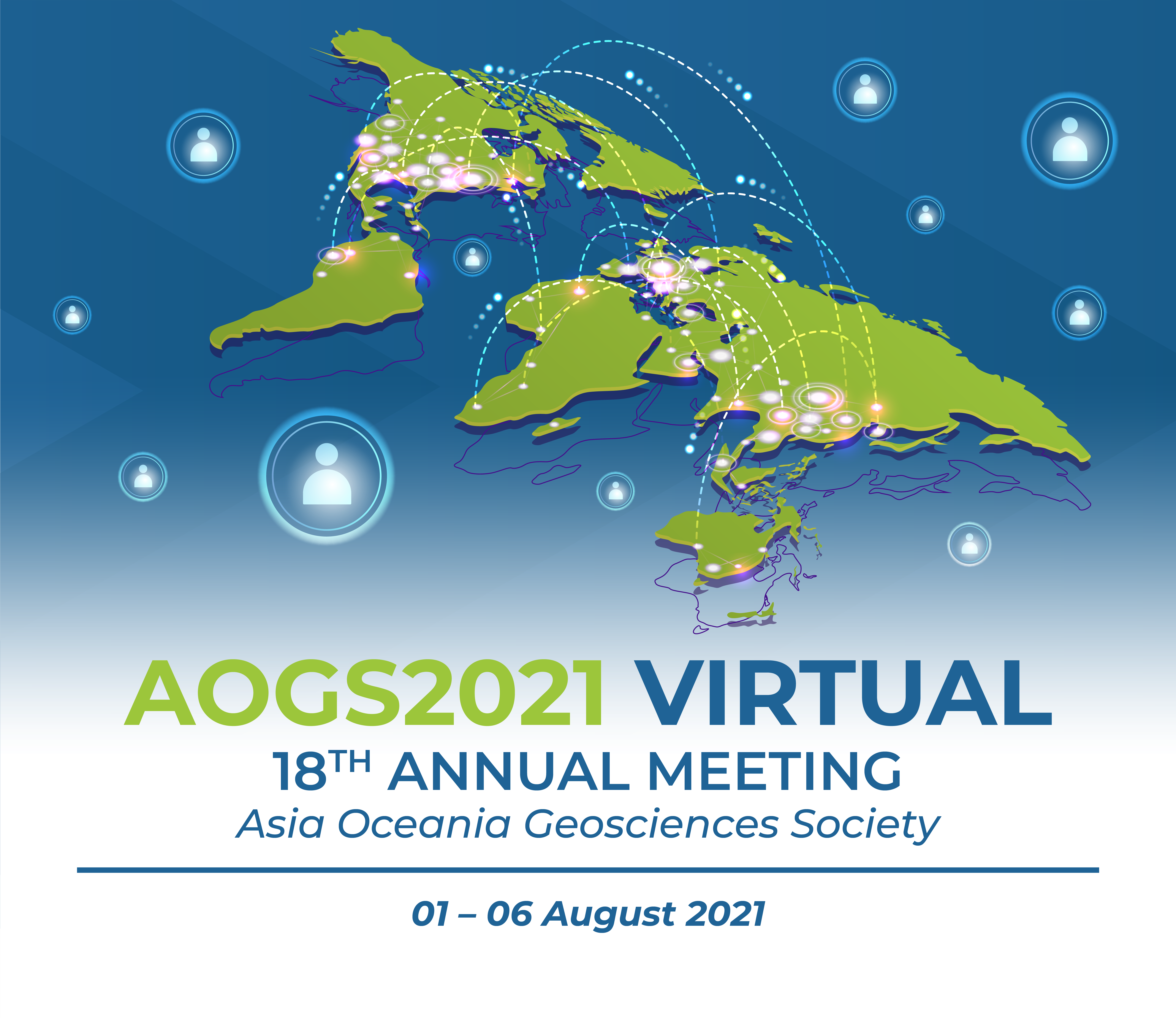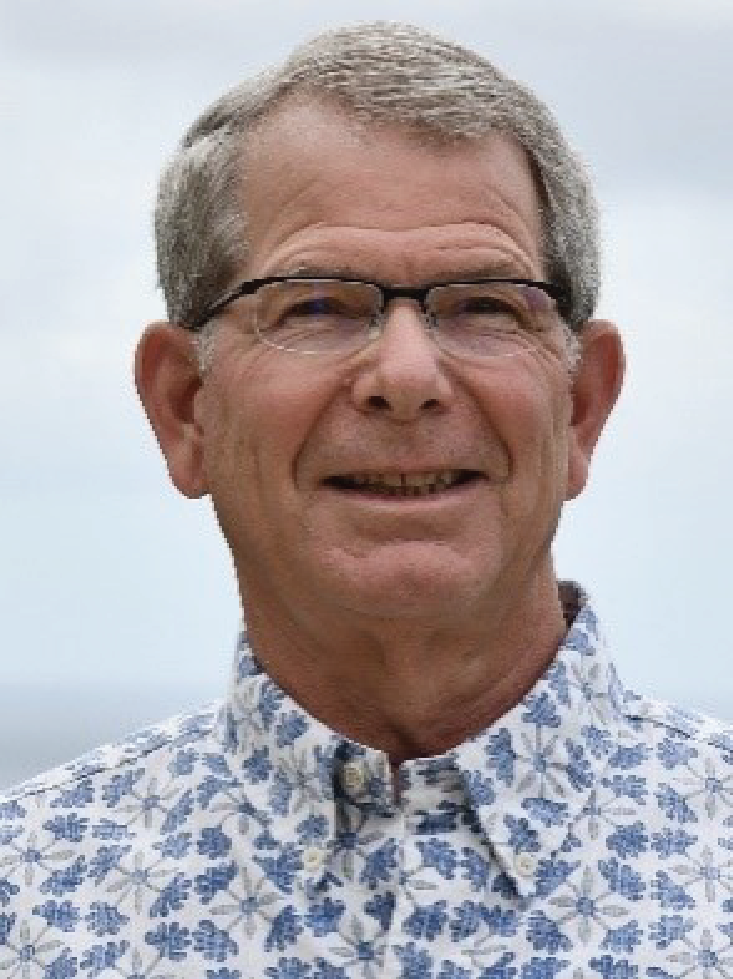

*Attend these AOGS2021 Webinars Free! – Registered Attendees Only
All AOGS e-news subscribers are eligible to attend. Please help us forward this information to your friends and
professional contacts. If not yet a subscriber, they need sign up for an account on MARS to receive
the complimentary invite. Not yet a subscriber?
Sign up Here to Receive Your Complimentary Invitation
Axford Lectures | Medal Lectures | Section Distinguished Lectures
All times shown are Singapore Standard Time (GMT+8)

Wing Ip Medal Lecture (Save A Seat - Opens 15 Jul)
Wed-04 Aug, 13:00 - 15:30, Room WB3
“Complex Thrust Deformation at the Toe of the Nankai Accretionary Prism Caused by Subducting Basement Topography”
2021 AOGS Wing Ip Medallist
Gregory F. MOORE
University of Hawai‘i
Large-scale modification of subduction margins, usually caused by seamount or ridge collision, is common along margins with relatively thin incoming sediment sections, such as the Japan, Middle America and Peru-Chile Trenches. Similar deformation, however, has occurred along the Nankai Trough accretionary margin, even though there is a relatively thick cover of sediment on the subducting Philippine Sea Plate.
Structural variability along the Nankai margin is the norm. Basement topography generated during the waning stages of opening of the Shikoku Basin has caused significant variations in sediment thickness and type that, in turn, also effect structural styles along the margin. The western part of the area (S of central Shikoku) is characterized by long, linear folds and thrusts. This relative simplicity is interrupted along the margin to the NE, where large-scale topography associated with the extinct spreading center of the Shikoku Basin (the Kinan seamount chain) is being subducted, causing an ~100 km-long x 75 km-wide embayment in the margin. The region to the east of this huge collision scar also has parallel folds and thrusts that are similar to those in the region to the west of the scar, but they exhibit greater variability in length and shape.
Much of the complexity in deformation along the Nankai accretionary prism is caused by relatively small-scale subducting topography. Even features < 500 m high cause deformation. For instance, a 400-m high seamount that has been carried beneath the frontal thrust has generated ~100m of “extra” uplift along the frontal thrust and has caused the frontal thrust to shift ~5 km seaward of the previous frontal thrust. A 400-m high seamount a few km SW of the Kumano IODP drilling transect is now ~4-5 km landward of the frontal thrust and has caused a 4 km-long x 3 km-wide landslide scar along the frontal thrust ridge. Detailed reconstructions across these two seamount collisions show that complex, small-scale deformation occurs as the frontal thrust rides up and over the seamounts.
Biography
Gregory Moore is an Emeritus Professor in the Department of Earth Sciences at the University of Hawai‘i. He was a U.H. Professor from 1989 to July, 2020. Previously, he was an Associate Professor at the University of Tulsa and a Post-Doc and Assistant Research Geologist at Scripps Institution of Oceanography.
Dr. Moore’s experience studying Asian Geology began as a graduate student at Cornell University with three field seasons mapping the structure and stratigraphy of Nias Island, Indonesia (1975-1977). During his time at Scripps, he jointly led a marine geophysical cruise to the Sunda Trench offshore Java and Sumatra and conducted land field work in the Molucca Sea Collision Zone of NE Indonesia and southern Philippines. He later jointly led a seismic cruise to the Taiwan collision zone. He began a decades-long investigation of the Nankai Trough subduction zone in 1987 on a joint cruise with colleagues from Tokyo University and the University of Texas, continuing with two 3D seismic cruises and 5 ODP/IODP expeditions (2 as Co-Chief Scientist), and collaborative analyses of 2D seismic lines collected by Japanese colleagues. While continuing with Nankai studies, he also investigated mélange zones and mud volcanoes in the Rakhine State of Myanmar (2013-2015), joined an IODP expedition to the Hikurangi margin of New Zealand (2018-2019) and is now analyzing a 3D seismic data set from Hikurangi.
The continued success of Dr. Moore’s field-based studies has only been possible with the unselfish assistance, participation and local knowledge of numerous colleagues from Indonesia, the Philippines, Taiwan, Japan, Myanmar and New Zealand, all of whom he thanks profusely.